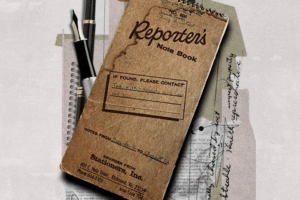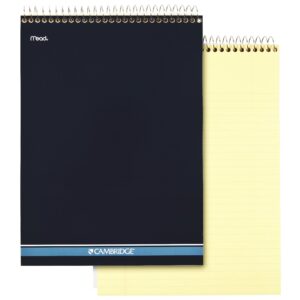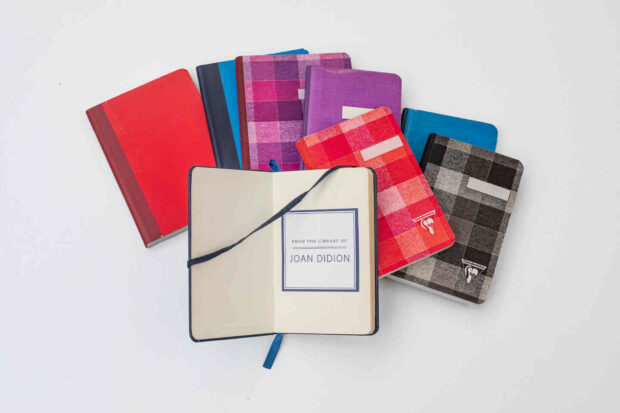Thinking about Notebooks
From the earliest days of news-gathering through to the digital present, the one constant has been a reporter’s notebook and a pen. Many use a steno pad or the newer Blackwing Reporters Pads (or even pricy Moleskins); I rely on the Mead Cambridge notebook, which is slightly smaller than a steno pad, slightly larger than the Blackwing. But whatever you use, it’s one item that technology hasn’t replaced. Sure, I use a voice recorder (others use their smartphone). But you don’t need to record every word of every interview, especially short ones, and, in any event, I use my notepad as a backup — technology can screw up, as we all know — and to record details such as a subject’s appearance, the objects around a room, or key gestures made for emphasis. Some use a tablet or other form of digital note-taking tool, but they aren’t nearly as flexible and portable as a notebook, and share with smartphones the potential to stop working.
 At first, writers used whatever was handy, anything from napkins or scraps of paper to a diary. But notebooks that suited the growing profession of journalism became available in the early part of the 20th century. The format, with slight variations, has remained the same: typically vertically-oriented and compact, easy to carry or slip into a jacket pocket or purse. They are almost always spiral bound on the top, allowing reporters to quickly flip over the pages while scribbling, and have a firm chipboard back for stability.
At first, writers used whatever was handy, anything from napkins or scraps of paper to a diary. But notebooks that suited the growing profession of journalism became available in the early part of the 20th century. The format, with slight variations, has remained the same: typically vertically-oriented and compact, easy to carry or slip into a jacket pocket or purse. They are almost always spiral bound on the top, allowing reporters to quickly flip over the pages while scribbling, and have a firm chipboard back for stability.
A measure of the value of a journalist’s notebooks was revealed shortly after Joan Didion’s death in 2021. The following year, 38 of her notebooks, gathered in bundles, were included among the items in her estate sale auction. Not surprisingly, they were not the utilitarian kind; some were Moleskins, others Clairefontaine. Didion wrote, in her essay, “On Keeping a Notebook,” included in her 1968 collection, Slouching Towards Bethlehem, that it’s important to write things down to “record what we see around us.” Perhaps that’s why they sold for US$11,ooo a bundle, even though they were all blank.

